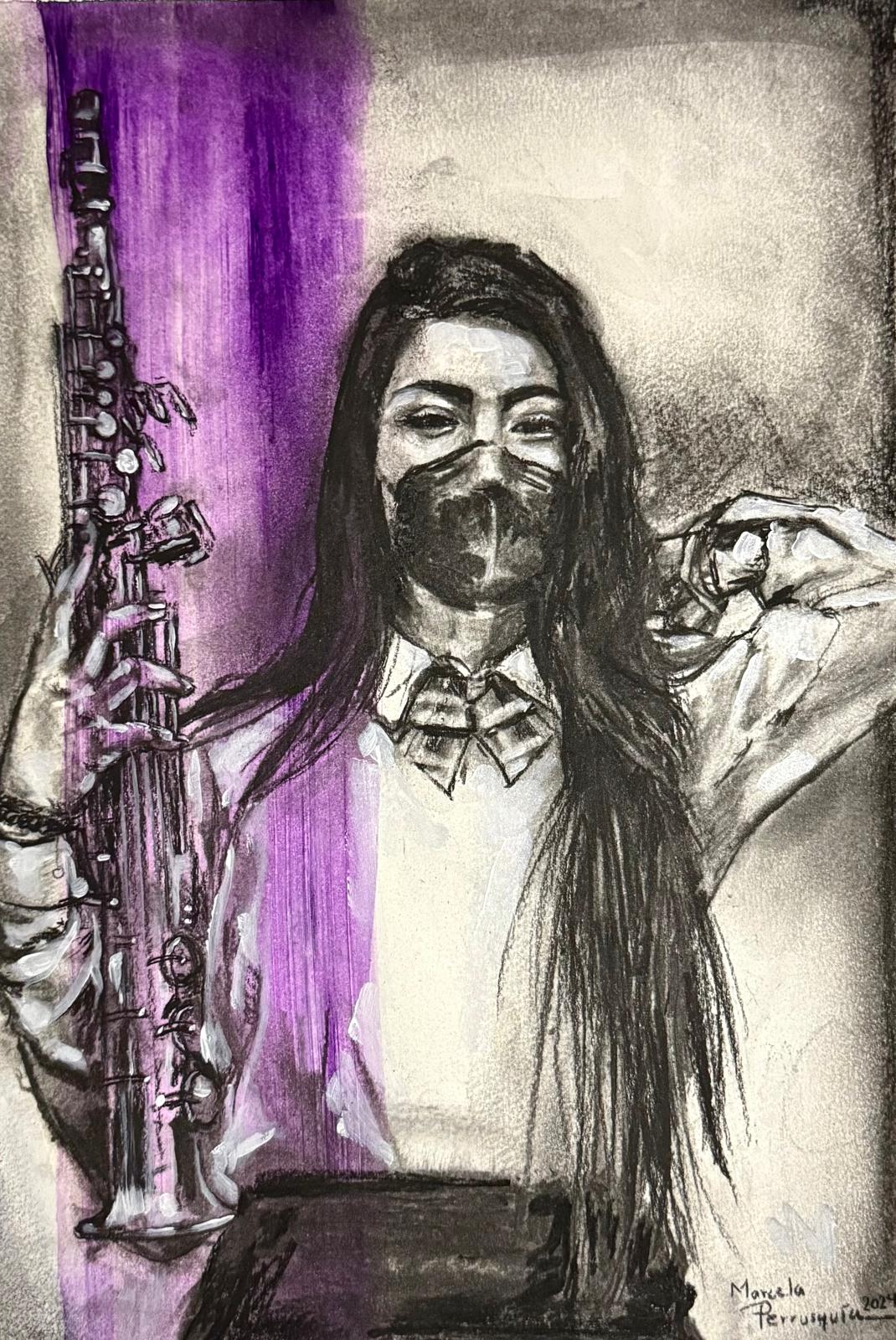Tell us about yourself...
“My name is María Elena Ríos Ortiz - I’m Mexican, specifically from the state of Oaxaca, a wonderful state with a very rich cultural heritage, but also marked by misogyny and a patriarchal structure that can’t be overlooked. [...] I’m32 years old. I’m a survivor of femicidal violence [...]Someone tried to kill me with acid about five years ago; it was in September 2019. And this event definitely changed the entire course of my life, the projects I had, the dreams I had envisioned since I was very young.”
“I have a bachelor’s degree in communications, and I’m currently studying music at the UNAM Faculty of Music. One of the dreams and motivations - or rather, one of my personal dreams - was what motivated my aggressor to try to kill me, because it was either be with him or continue with my life plans. I’m a saxophonist, but through this terrible aggression, this violence, this attempted feminicide, [...] I came to be referred to in society as Elena Ríos, the saxophonist who was attacked with acid. ”
“I’ve been stigmatized not only as a woman, but also as a survivor, as a victim - which is a legal designation - and as an activist. In fact, I didn’t even know I was considered an activist until my father told me, “I heard on the news they said, ‘activist Elena Ríos, the saxophonist who was attacked with acid.’”

Portrait of Maria Elena
Technique: mixed media
Dimensions: 21 x 30 cm
Year: 2024
Signature of the artist: yes
The process...
“This has been a very painful process because not only was I attacked, but so was my mother. She also has scars, she suffered third-degree burns, third-degree injuries. [...] the right to health in my case - and in my mother’s as well - this right was not guaranteed. Because standing in the way of that right was not only a symbolic form of power, but also political and economic power held by the aggressor”
“There has been a tremendous amount of obstruction of justice because I don’t have the economic or political resources to meet the corrupt demands of the institutions [...] in the end, there are legal proceedings that have to go through a federal judge, and ultimately, it’s always corrupted by the aggressor. Because he’s not only a politician with significant influence, he’s also a gasoline businessman.”
“So I’ve faced enormous obstruction of justice. We’re currently still in an open legal process in which I haven’t been able to obtain a conviction, even though I have all the key, clear, and concise evidence needed to convict him.”
How they see me...
“I’ve ended up being revictimized by the authorities, who say that I’m not really a victim [...] They ask how I can be a victim if I go to a restaurant. If I’m a victim, why do I play the saxophone? If I’m a victim, why do I give concerts?”
“this is a narrative that, aside from being archaic, has been deeply normalized”
“ the State, through its institutions, has a series of inefficiencies that prevent access to justice - especially for women and children. Why is it so important for me to emphasize women and children?we live in a phallocentric society where the patriarchal structure is the starting point. [...] laws that were constructed, conceived, designed, and applied by men and for men. So right there is the first problem I started to see—and there’s still so much more I have yet to understand”
Excerpt from the interview with Maria Elena (in spanish)
Transcription of the excerpt in english
I like anthropology and I have deep respect for the history of my ancestors, of Mesoamerican cultures and civilizations, during the pandemic I had read something about what it meant to be a warrior.
And I thought, “That’s true—we don’t talk about female warriors.”
Because back then, women were expected to accept that just by giving birth to a male warrior, that made them warriors.
But when the men came back from battle, they were proud of their scars.
They showed off their scars - because they were a symbol of strength, of:
“Look, I survived. Look at me.”
And I remember this very clearly -
It was during the pandemic, in a hot month of May, and I only had one t-shirt.
And after reading that article, I went looking for a mirror in my sister’s house.
And I said to myself:
“It’s true. I’m a warrior too. I have scars, and I’m alive.”

#LeyMalena (Malena Law)
...is the legal reform that classifies acid attacks as attempted feminicide - no longer just bodily injury. The Penal Code was modified and now it recognizes acid violence as a distinct crime: the intentional burning of a woman’s body with acids, corrosive substances, or boiling liquids. After surviving an acid attack, Maria Elena realized that Mexico had no laws recognizing this type of attack. She knocked on doors, demanded forums, and united survivors, doctors, legal experts, and lawmakers. It wasn’t easy. She and other survivors organized, testified, and built technical teams: surgeons, forensic scientists, prosecutors, activists. They pushed legislation forward, state by state, starting in Oaxaca. Now, hospitals are legally obligated to report acid burns to authorities immediately, and victims don’t have to file a complaint while still fighting for their lives. Penalties double when attacks are against children, trans women, or people with disabilities.
It is now law in 13 states. The fight continues to make it a national law across all of Mexico.
"Before they called me 'the burned one.' Now, they call it Ley Malena. I remembered who I am."